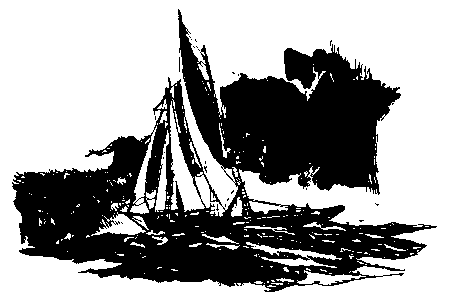
To contribute to this site, see above menu item "About".
These transcriptions may contain human errors.
As always, confirm these, as you would any other source material.

53 - South Coast Disaster of the Year 1929from The Treasury of Newfoundland Stories published, by Maple Leaf Mills Limited, in 1961In November 1929 twenty-nine lives were lost in south coast towns when a tidal wave struck. The disaster occurred as a result of an earthquake. Cables were smashed and it was three days before the first news came into St. John's in a wireless message from S.S. Portia. The tremors had lasted for almost four minutes. People ran from their homes. Two hours later a drastic noise from the sea sent them in panic to high ground. The roaring of the waves, the smashing of everything in the way and the shouts of people were terrifying. By 10 o'clock in the night destruction was complete. The Governor sent out S.S. Meigle with relief of doctor, nurses, members of the cabinet, medical supplies and food. Point de Gaul was worst hit. The expedition found homes, stages, wharves, boats and barns smashed. Gardens were covered with large rocks. At Lamaline they came upon a small house uplifted some yards from its original spot. Downstairs they found a mother and three children dead. Upstairs they found an infant, unharmed. (Note) A Nonia nurse came out from Lamaline to visit settlements. She tried to get along by car but the bridges and roads were washed away. She got a horse without saddle and rode to within eight miles of the end of her visitation. When the horse was exhausted and could go no further, she continued on foot. The expedition from the Meigle found her in a state of collapse. On November 23rd a delegation from Burin arrived via Argentia to lay the matter of assistance before the government. They told of fishermen who climbed floating houses searching for survivors in the darkness and chaos. At Stepaside as a house with ten people was being swept away rescuers shouted "jump". When the tide came back, they did and all ten were saved as the tide took the building out to sea. At Port aux Bras a fisherman saw his home being swept away. He tried to save his wife and family but was blocked by another floating house. He was helpless as his imprisoned family whirled into darkness. His house was pulled out to sea faster than a boat could steam. The tidal wave was different from one harbour to the other. In some places it was a wall of water 50 feet high which swept everything fair from land. In other places, such as St. Lawrence, it took a rotary motion which moved large buildings from one side of the harbour to the other. Along the beaches packages of winter provisions lay smashed. They were surrounded by household furniture, hay from cattle barns, parts of dwellings, stages and wharves. The damage was estimated at $1,000,000. Greater still was the economic problem it presented. On November 25th, two days before the return of the Meigle, a public meeting launched a movement to aid the suffering. The EVENING TELEGRAM opened a subscription list and had over $10,000 in hand in less than five days. Committees were formed all over the Island, and house to house collections were made in St. John's. Money poured in from Newfoundlanders abroad. Later it was learned the tidal wave was due to an earth movement along what is known as a "fault" extending east from the Gulf of St. Lawrence. Inshore there were places covered with five or six fathoms of water an ordinary size fishing vessel could not be floated. Perhaps most important marine growth was swept clean and many years went by before this life returned to its habitat.
|
Back to: The Treasury of Newfoundland Stories Menu
This page transcribed by James
Butler, 2000
REVISED: August 2002 (Terry Piercey)
Newfoundland's Grand Banks is a non-profit endeavor.
No part of this project may be reproduced in any form
for any purpose other than personal use.
JavaScript DHTML Menu Powered by Milonic
© Newfoundland's Grand Banks (1999-2025)
Hosted by
![]()
Your Community, Online!
![[Recent]](../recent.gif)
![[Contacts]](../contacts.gif)
![[Home]](../home.gif)